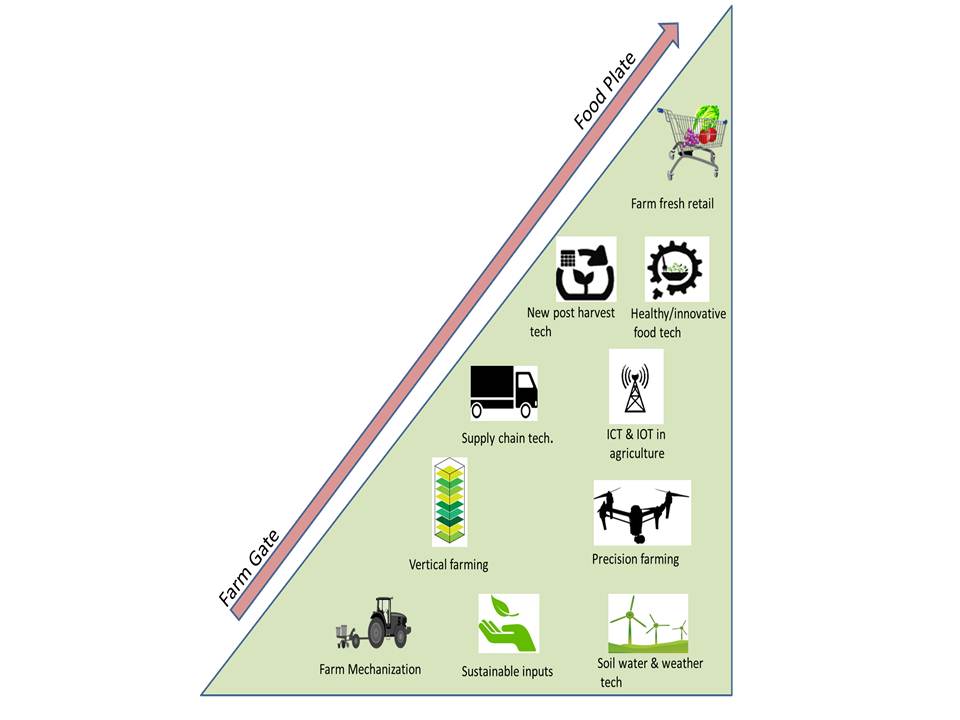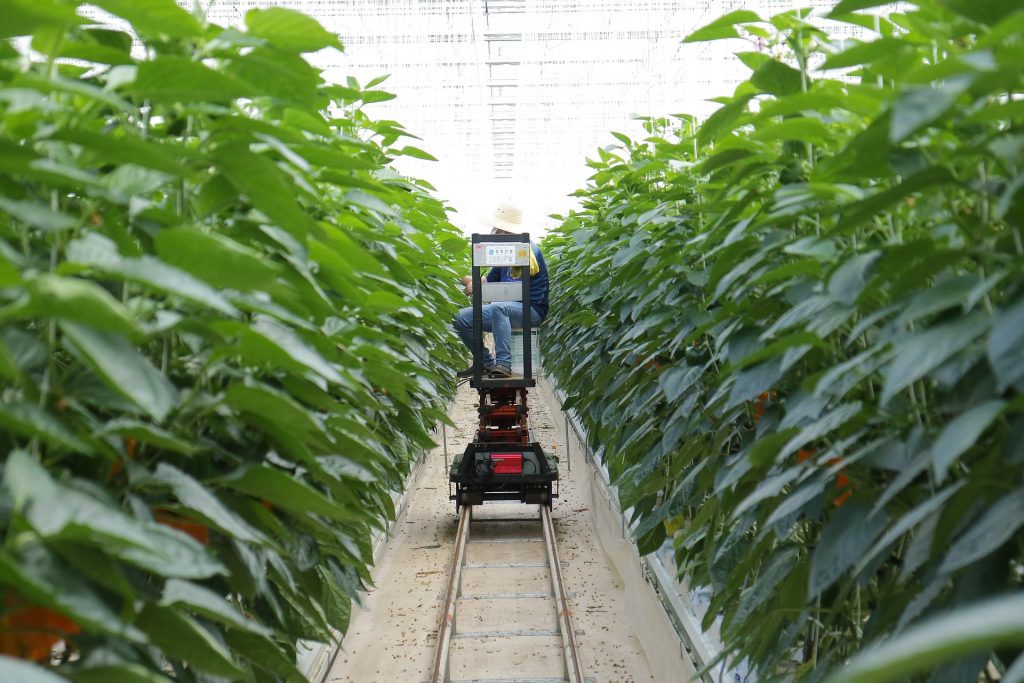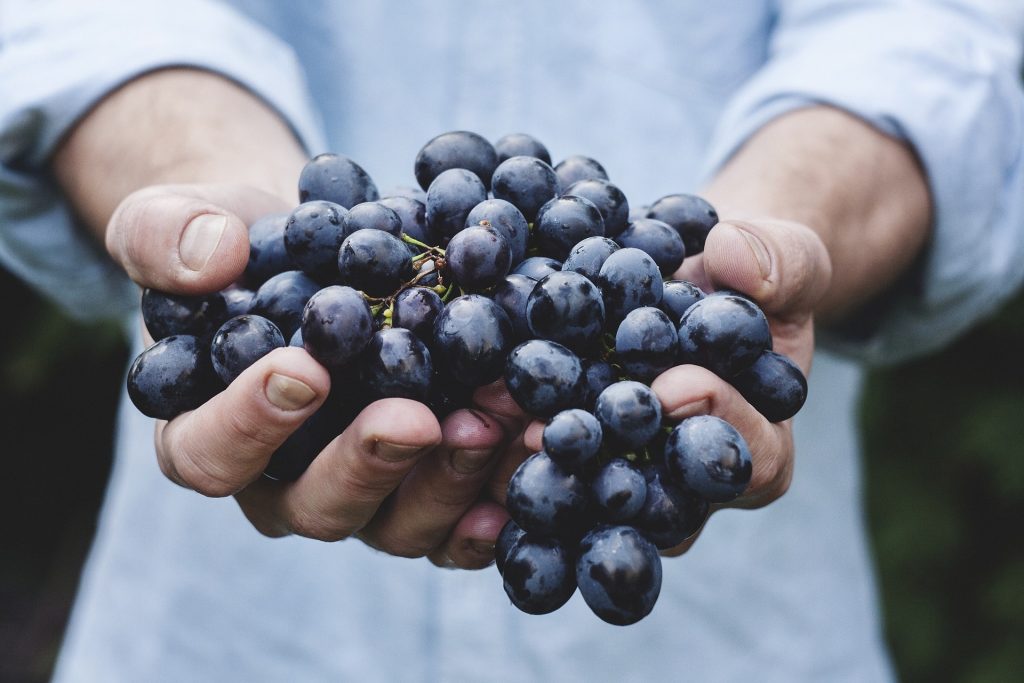Smart Farming
Precision Agriculture or Smart farming is one of the sectorswith the highest development opportunities and with the lowest penetration, todate, of digitized solutions.
It is a sector that needs digital solutions forenvironmental and territorial sensors, applications for the weather, automationof equipment for the increasingly precise management of water, fertilizers,fertilizers, agrochemicals. These are the areas where IoT can revolutionizefarming.
In the agricultural sector, now robots and AI nextgeneration of agriculture “that utilizes IoT” has appeared, it hasattracted attention.
what is precisionagriculture?
Precision agriculture consists of the process of managingthe different crops by observing, measuring and generating actions based on theresults obtained from the analysis of the different elements that affect cropproductivity. For this, sensors are used that collect information that is thenused to make decisions with greater precision, and also to optimize cropyields.
Stages inprecision agriculture

The arrival of low-cost solutions that incorporate multiple sensors and that use Low-Power Wide-Area Network (LPWAN) networks to transmit small data packets greatly enhance the possibilities of achieving extraordinary results through precision agriculture models based on IoT.
Crop management based on smart or precision agricultureencompasses monitoring activities, support tools for decision-making and theperformance of actions that automatically control one or more systems(irrigation, frost protection, fertilization, etc.)
01 ACQUIRE THEDATA

Using temperature sensors, humidity, soil conditions, climatic conditions among many others.
02 ANALYSIS OFDATA
Generation of KPIs, graphs, reports, alerts that allowobtaining visibility on the conditions and variables that are intended to beevaluated.
03 DECISION MAKING
The expert will have information to take preventive orcorrective decisions according to the particular conditions and objectives ofthe crop.
04 RESULTSMONITORING
The continuous information allows us to analyze results,learn from the executed actions and plan to improve.
The solution based on a series of sensors, devices and acomputer application allows to obtain detailed information of the crop, thesoil and of the more granular climatic variations than the techniques oftraditional agriculture directly impacting on the quality of the products, inthe processes that are made and in the raw materials or inputs used in theactivity.
Purpose of smartagriculture
Efforts using advanced technology called “Smart” are beingpromoted in various fields, and there are many products and solutions.Smartphones, smartwatches, smart speakers, smart homes, and even smartcommunities using these devices are born.
Among them, smart agriculture has been regarded as anindustry that is difficult to introduce, especially in fields that have oftenbeen thought to have little connection with technologies such as IT and ICT. Ithas accelerated all at once in the last few years, and its introduction isgrowing rapidly, regardless of size.
The following can be considered as the purpose ofintroducing smart agriculture:
1. Labor-savingand labor reduction of farm work
The first is labor-saving and light labor in farming. Theagricultural sector in every country is experiencing a serious labor shortagedue to the aging of individual farmers. It is required to support suchhardships in agriculture using IoT.
2. The successionof agricultural technology
The second is the succession of cultivation skills to newworkers. There is a shortage of human resources to succeed in inheritance andagriculture so that the agricultural technology cultivated in the inheritanceof family members can be inherited continuously by smart agriculture systems.
3. Increase foodself-sufficiency
The third purpose is smart agriculture as a measure againstfood self-sufficiency in the world. Many developing even developed countries’imports exceed domestic production, making it difficult to say that theappropriate balance is maintained.
In order to increase the yield and raise the self-sufficiency ratio in the shortage of human resources as mentioned above, automation with sensors and robots is indispensable for reliably growing agricultural products with a small number of personnel.

4. Cost reductionand quality Improvement
The reduction of costs, the improvements in the process andin the care of the crops, the optimization in the use of material and humanresources, the increase of the yield per hectare cultivated, the greaterquality of final product and the decrease of discard, the compliance withnational and international requirements of production and productcharacteristics, etc. These are some of the concrete benefits of opting for aSimple IoT Smart Agriculture solution.
Example of CostReduction:On-line monitoring of soil temperature and humidity will collaborate indetecting if the environment is conducive to the proliferation of fungi andpests in crops, this allows them to apply fertilizers and fungicidesefficiently and accurately obtaining a cost reduction.
Example of ProductQuality Increase:Optimization of production and quality improvement will be possible, amongother things, by making online measurements of the size of the stem and of thefruit or crop in question, the level of water required for irrigation, thevalue of Photosynthetically Active Radiation (RFA / PAR) to measure the conditionsof photosynthesis, etc.
5. Realtime datacollection
All of this also has real-time and historical weatherinformation through different sensors and devices that allow monitoring ofatmospheric pressure, air temperature and humidity, wind speed and direction,amount of rainfall, dew point, etc.
All the information collected is stored to be able to makestatistical reports, traceability, extract data to carry out corrective orpreventive actions, issue alerts, etc.
The solution not only allows us to expose the information ina complete way and of easy visualization, additionally, at the request of theclient it can generate notices or alerts in mobile devices of data processingor cell phones.
Practicalapplications of the Internet of Things in the agricultural sector
The agricultural sector has also launched into thehyperconnected world. Thanks to Smart Agriculture we can obtain detailedinformation on the crop, soil and climatic variations in real-time from anytablet or smartphone. New IoT technologies have broken into strong sectors suchas agriculture or livestock with the aim of improving the quality of life andreducing heavy work.
Here we want to analyze some of the practical applicationsof the Internet of Things in this sector:
The smart tractors

These tractors are to replace the driver’s cab for a complete standalone system based on cameras, radar, GPS and sensors that detect obstacles and make the vehicle change direction to avoid impacts. The farmer programs it with an application and can make it work simultaneously with other tractors. Thanks to the introduction of maps in the system, with the limits of the field and, in addition, it includes software of route planning.
Drones
Drones are unmanned aircraft that will increasingly fly overagricultural land. The market of the drone is moving at a rapid pace. Many farmers already use them to know thestate of the crops accurately in real-time and thus carry out a precisionpesticide spraying. In Poland, they have even started to work with the dronecalled ‘bee drones’ in order to favor world pollination due to the reduction ofbees.
Online monitoringthrough sensors
Online monitoring through sensors allows farmers to knowfrom their smartphone or tablet the temperature, humidity and stem size of thefruit or crop. Depending on the state of the crops, each person can adapt toeach farm the treatment of fertilizers and fungicides effectively andaccurately.
Smart Devices forLivestock
Connected livestock is another of the advances that arealready being made. Tools and sensors that measure the movement of cattle,control their nutrition and even their reproductive capacity. In addition,farmers can always know the location of animals to facilitate their countingand reduce theft.
Smart Pest Control
Smart pest controls through remote sensors are installed incrops and warn farmers about the most suitable conditions for pestproliferation. Even the actions necessary to combat them can be performedmanually or automatically thanks to the use of new technologies.
Artificialintelligence (AI) in Agriculture
AI can also be used to systematize and provide technologiesand know-how for new farmers. By doing this, even people who have no experienceor knowledge of agriculture can engage in agriculture and hope to help solvethe shortage of human resources.
Some programs have already been developed and put intopractical use, such as programs that analyze the degree of growth based on theshape and color of crops to predict and judge harvest time.
In addition, it is possible to detect information on croppests at an early stage by using image analysis using AI and to provide countermeasures.In both cases, demonstration experiments have already begun, and there arecases where these have been partially commercialized.
The growth situation from the field image of the drone isgrowing especially recently in the field of agriculture using AI. Judgment ordetection of pests and dealing with them. The Japanese developed “PinpointPesticide Spraying Technology” that sprays pesticides only on the points wherethe detected pests are present, reducing the labor of spraying the pesticides,reducing the cost of the sprayed pesticides, and above all, affecting thenatural environment and crops. Keeping it the minimum necessity.
In addition, this technology can be utilized not only forlarge-scale farmers but also for small and medium-sized farmers who have onlysmall fields and may become a technology that supports successor farmers andnew farmers.
Smart Agriculture is able to cover and provide solutions tothe entire production cycle and also to the harvest and storage stages of the finalproduct.
Smart agriculturecase study
As we have spoken so far, it is by no means a dream story in pursuit of ideals. Although it takes time to spread to ordinary farmers, there are already examples of smart agriculture introduced all over the world.
The Netherlands, which is said to be a developed country ofsmart agriculture, is a pioneer that is always mentioned when talking aboutsmart agriculture. In Dutch farms, infrastructure using smartphones and tabletshas been developed so that the state of crop growth can be monitored 24 hours aday.
In addition, agriculture using the latest technology, suchas sensing technology using various sensors and network technology using IoT,and even renewable energy is being deployed.
Disadvantages of smartagriculture, future challenges
Smart agriculture seems to be a good thing in this way, butnaturally, there are some disadvantages if you want to introduce smartagriculture.
The initial costis expensive
First of all, the initial cost of an introduction is higherthan that of ordinary agricultural machines. How to keep development costs lowdepends on the skill of the manufacturer.
In addition, even if it can be introduced, ICT and robotsthat have just begun to be used in the agricultural field also have an aspectthat it is difficult to make a cost-effective outlook. Many farmers say theyhave given up on the way because they were unable to use it after all.
Variation in thedata format of individual devices
Next, these ICT devices and robots are products that are unique to each manufacturer, so the problem is the standardization of software and data formats. These things need to be taken into consideration from the long-term perspective to data storage, management, and migration.
This is because interoperability is not possible if it isdivided into its own systems and standards. However, the development of theseOSs and middleware often falls under the dilemma that standardization is notprogressing easily because organizations such as companies are oftenindependently developing in order to gain market share.
Shortage anddevelopment of smart farmers
The viewpoint of human resource development for smartness isalso needed. There are few people who can quickly use such smart devices foraging farmers. Support systems for mastering smart devices and the developmentof IT-savvy personnel are urgently needed in the agricultural field.
New work burden onfarmers
The introduction of such smart agriculture places afinancial, time and technical burden on the farmers. It will be more difficultto learn than the introduction of agricultural machines as before, and it willbe very difficult for those who are not used to data input and data analysisusing personal computers, smartphones, and tablets.
Taste ofvegetables grown in smart agriculture
And don’t forget the taste of crops. No matter how smartagriculture increases efficiency and yields, consumers will not choose unlessit is delicious food.
Plant factory as efforts to stable constant yield can beobtained. On the other hand, the plant factory of vegetables that haveundergone artificial light, such as LED cannot be compared with the foodgrowing up in response to full sunlight. There must be a taste difference.
There is no doubt that smart agriculture will reduce theburden of our agricultural work. However, it is a “means” for making deliciousvegetables, not a “purpose”. I want to keep in mind that smart agriculture isthe way to grow nutritious and delicious vegetables.
Conclusion:
A wave of change is about to come to the world ofagriculture that has long been screamed to eliminate human resource shortagesand improve productivity. IT technology is the driving force. “Smart farming”,which uses IoT (Internet of Things) and the cloud to optimize the whole farmmanagement from production management to quality control, distribution, andsales, is drawing attention.




